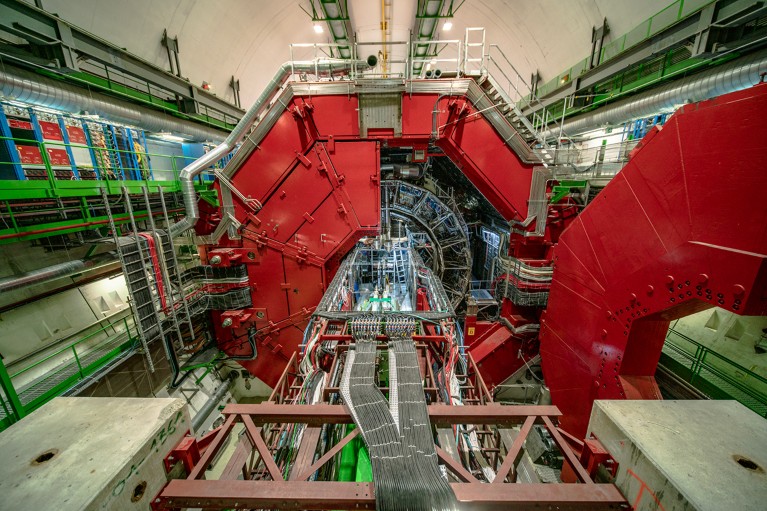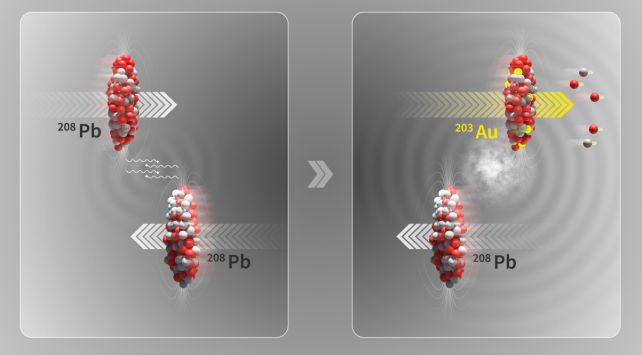In an extraordinary experiment at CERN’s Large Hadron Collider (LHC), physicists have turned lead into gold — but only for a brief moment. This feat, a modern-day form of alchemy, occurred when high-energy lead ions collided, resulting in the creation of gold nuclei for a fraction of a second. While the process is far from the centuries-old dreams of turning lead into pure gold, the achievement holds significant scientific value, offering insights into particle interactions under extreme conditions.
A Modern Twist on Alchemy
The idea of turning lead into gold has long been a dream of alchemists. Though the ancient pursuit never bore fruit through chemical means, today’s physicists have found a way to make it happen, using the most advanced particle physics equipment.
The Large Hadron Collider, located near Geneva, Switzerland, smashes together lead ions at nearly the speed of light. Occasionally, instead of direct collisions, the ions pass each other closely enough to create an electromagnetic pulse. This pulse triggers a reaction in one of the lead nuclei, causing it to eject protons and thus turning it into gold.
The process is extremely rare, requiring incredibly high energy and specific conditions. The ALICE (A Large Ion Collider Experiment) collaboration at CERN was responsible for detecting and quantifying these occurrences. Their findings, published in Physical Review C on May 7, revealed that between 2015 and 2018, these rare interactions produced 86 billion gold nuclei. Though minuscule — just 29 trillionths of a gram — the experiment provided a fascinating glimpse into the world of nuclear physics.

The Science Behind the Transformation
To understand how this transformation happens, one must first grasp the physics of the situation. Lead, with its 82 protons, was subjected to extreme conditions where the nuclei accelerated to nearly the speed of light. As the ions passed each other in the LHC, their electromagnetic fields created pulses of energy. These pulses interacted with the lead nuclei, causing them to shed three protons. This was enough to convert the lead nucleus into a gold atom, which contains 79 protons.
While gold wasn’t the only element to emerge from these interactions, it was one of the most notable. The process also created other elements like thallium and mercury, though in much greater quantities than gold. The team at CERN used the ALICE detector to count the protons and neutrons that were ejected from the lead nuclei during the collisions, allowing them to track the production of these elements.


The Fleeting Existence of Gold
Despite the creation of gold, the amount produced was incredibly small. The total mass of gold generated was approximately 29 picograms, or 29 trillionths of a gram — a mass too small to see with the naked eye. The gold atoms created in the LHC were highly unstable and lasted only about one microsecond before disintegrating. They quickly collided with the walls of the LHC or decayed into other particles, making the gold’s existence ephemeral at best.
Even though the process resulted in incredibly small amounts of gold, the implications are vast for particle physics. The experiment allowed scientists to study rare electromagnetic processes, providing new insights into how particles interact under extreme conditions. According to physicist Uliana Dmitrieva, “Thanks to the unique capabilities of the ALICE ZDCs, the present analysis is the first to systematically detect and analyze the signature of gold production at the LHC experimentally.” The ability to capture such rare events was a significant achievement for the team.
A New Way to Study Nuclear Transmutations
Although the creation of gold in the LHC is not a practical method for obtaining the precious metal, it is a remarkable demonstration of the power of modern particle accelerators. The findings shed light on a process known as “nuclear transmutation,” which involves the transformation of one element into another. This process is not only fascinating from a scientific standpoint but also enhances our understanding of particle collisions and nuclear reactions.
Physicist Marco van Leeuwen, spokesperson for the ALICE collaboration, expressed his enthusiasm for the work, stating, “It is impressive to see that our detectors can handle head-on collisions producing thousands of particles, while also being sensitive to collisions where only a few particles are produced at a time, enabling the study of rare electromagnetic ‘nuclear transmutation processes.” The ability to capture these rare moments has opened up new avenues for research, potentially refining how particle accelerators are used in the future.

